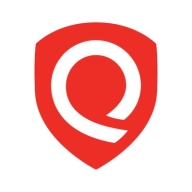

Qualys VMDR and SUSE NeuVector compete in the cloud and on-premise vulnerability management category. Qualys VMDR appears to have a more comprehensive approach with its expansive feature set and continuous monitoring, whereas SUSE NeuVector excels in container security and offers a more cost-effective solution.
Features: Qualys VMDR is noted for its vulnerability detection, patch management, and continuous monitoring, making it valuable for vulnerability assessments and compliance solutions. In contrast, SUSE NeuVector provides robust container security, focusing on image scanning and runtime protection, which are essential for DevSecOps pipelines.
Room for Improvement: Users of Qualys VMDR suggest improvements in simplifying the user interface, enhancing asset tagging, and speeding up report generation. They also seek better integration with IoT and SCADA systems. For SUSE NeuVector, users recommend expanding visibility into DevSecOps pipelines, improving infrastructure scanning, and strengthening image scanning and rule definition.
Ease of Deployment and Customer Service: Qualys VMDR offers versatile deployment options across private, hybrid, and public clouds, though customer service feedback is mixed. SUSE NeuVector effectively supports public and on-premises deployments and receives praise for its rapid customer service and quality technical support, with minor suggestions for improvement.
Pricing and ROI: Qualys VMDR's pricing is seen as high compared to competitors like Tenable, yet its ROI is positively regarded due to comprehensive coverage and vulnerability reduction. SUSE NeuVector, benefiting from its open-source nature, presents lower initial costs and is perceived to deliver a positive ROI, particularly for container security.
| Product | Market Share (%) |
|---|---|
| Qualys VMDR | 2.3% |
| SUSE NeuVector | 2.2% |
| Other | 95.5% |


| Company Size | Count |
|---|---|
| Small Business | 20 |
| Midsize Enterprise | 12 |
| Large Enterprise | 69 |
| Company Size | Count |
|---|---|
| Small Business | 5 |
| Midsize Enterprise | 1 |
| Large Enterprise | 2 |
Vulnerability Management, Detection, and Response (VMDR) is a cornerstone product of the Qualys TruRisk Platform and a global leader in the enterprise-grade vulnerability management (VM) vendor space. With VMDR, enterprises are empowered with visibility and insight into cyber risk exposure - making it easy to prioritize vulnerabilities, assets, or groups of assets based on business risk. Security teams can take action to mitigate risk, helping the business measure their actual risk exposure over time.
Qualys VMDR offers an all-inclusive risk-based vulnerability management solution to prioritize vulnerabilities and assets based on risk and business criticality. VMDR seamlessly integrates with configuration management databases (CMDB), Qualys Patch Management, Custom Assessment and Remediation (CAR), Qualys TotalCloud and other Qualys and non-Qualys solutions to facilitate vulnerability detection and remediation across the entire enterprise.
With VMDR, users are empowered with actionable risk insights that translate vulnerabilities and exploits into optimized remediation actions based on business impact. Qualys customers can now aggregate and orchestrate data from the Qualys Threat Library, 25+ threat intelligence feeds, and third-party security and IT solutions, empowering organizations to measure, communicate, and eliminate risk across on-premises, hybrid, and cloud environments.
SUSE NeuVector is a full lifecycle container security solution that helps your organization secure its container infrastructures, manage Kubernetes security risks, and block threats. The NeuVector continuous container security and compliance platform simplifies data protection from pipeline to production, enforces compliance, and provides complete visibility and automated controls for protection against known and unknown threats. In addition, NeuVector is the only Kubernetes-native container security solution that offers a comprehensive risk profile of known vulnerabilities and also delivers immediate protection from all vulnerabilities.
SUSE NeuVector Features
SUSE NueVector has many valuable key features. Some of the most useful ones include:
SUSE NeuVector Benefits
There are many benefits to implementing NeuVector. Some of the biggest advantages the solution offers include:
Reviews from Real Users
A Platform Solution Architect at a tech services company says, “The solution is feature-rich, easy to set up, and has good support.”
We monitor all Container Security reviews to prevent fraudulent reviews and keep review quality high. We do not post reviews by company employees or direct competitors. We validate each review for authenticity via cross-reference with LinkedIn, and personal follow-up with the reviewer when necessary.